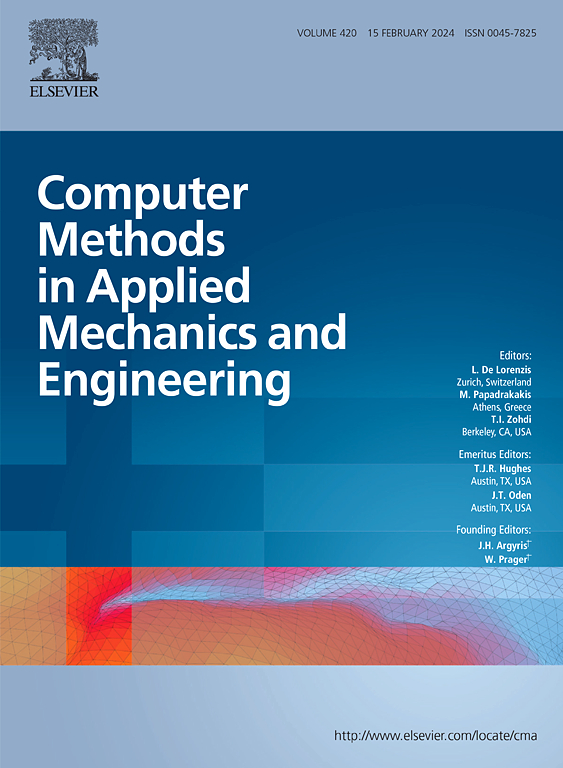Accelerating high-fidelity simulations of chemically reacting flows using reduced-order modeling with time-dependent bases
IF 6.9
1区 工程技术
Q1 ENGINEERING, MULTIDISCIPLINARY
Computer Methods in Applied Mechanics and Engineering
Pub Date : 2025-02-01
DOI:10.1016/j.cma.2025.117758
引用次数: 0
Abstract
Direct numerical simulations (DNS) of chemically reacting flows are extraordinarily expensive due to the large number of partial differential equations representing the transport of chemical species and stringent resolution requirements imposed by turbulence and flame scales. The present study extends a novel on-the-fly reduced-order modeling strategy based on time-dependent bases and CUR factorization (TDB-CUR) (previously applied to systems of stochastic partial differential equations, Donello et al. Proc. R. Soc. A 479 (2023) 20230320) to significantly reduce computational cost as well as memory and storage requirements of deterministic turbulent reacting flow simulations. The species transport equations are reformulated as a matrix differential equation (MDE) to leverage the instantaneous low-rank structure of the resulting species mass fraction matrix, constraining the solution of the species MDE to the manifold of low-rank matrices and integrating it explicitly in its low-rank form. In this formulation, the rows represent the grid points and the columns correspond to the species mass fractions. The species matrix contains significantly more rows than columns and is found to be amenable to accurate low-rank approximations. A CUR algorithm is employed to construct the low-rank approximation of the species matrix by sampling only a dominant subset of its columns and rows, extracted on-the-fly. We develop a time-explicit integration algorithm for the CUR low-rank approximation, constraining the selected columns (species) to only include slow species. The selected rows (grid points that include the fast species) have significantly fewer entries and are sub-cycled with smaller effective time steps, yielding implicit-like time-stepping while maintaining explicit-like computational costs. The proposed methodology is validated across a hierarchy of combustion problems on massively parallel supercomputers, demonstrating up to two orders of magnitude reduction in computational cost without compromising accuracy or relying on training data.
求助全文
约1分钟内获得全文
求助全文
来源期刊
CiteScore
12.70
自引率
15.30%
发文量
719
审稿时长
44 days
期刊介绍:
Computer Methods in Applied Mechanics and Engineering stands as a cornerstone in the realm of computational science and engineering. With a history spanning over five decades, the journal has been a key platform for disseminating papers on advanced mathematical modeling and numerical solutions. Interdisciplinary in nature, these contributions encompass mechanics, mathematics, computer science, and various scientific disciplines. The journal welcomes a broad range of computational methods addressing the simulation, analysis, and design of complex physical problems, making it a vital resource for researchers in the field.

 求助内容:
求助内容: 应助结果提醒方式:
应助结果提醒方式:


